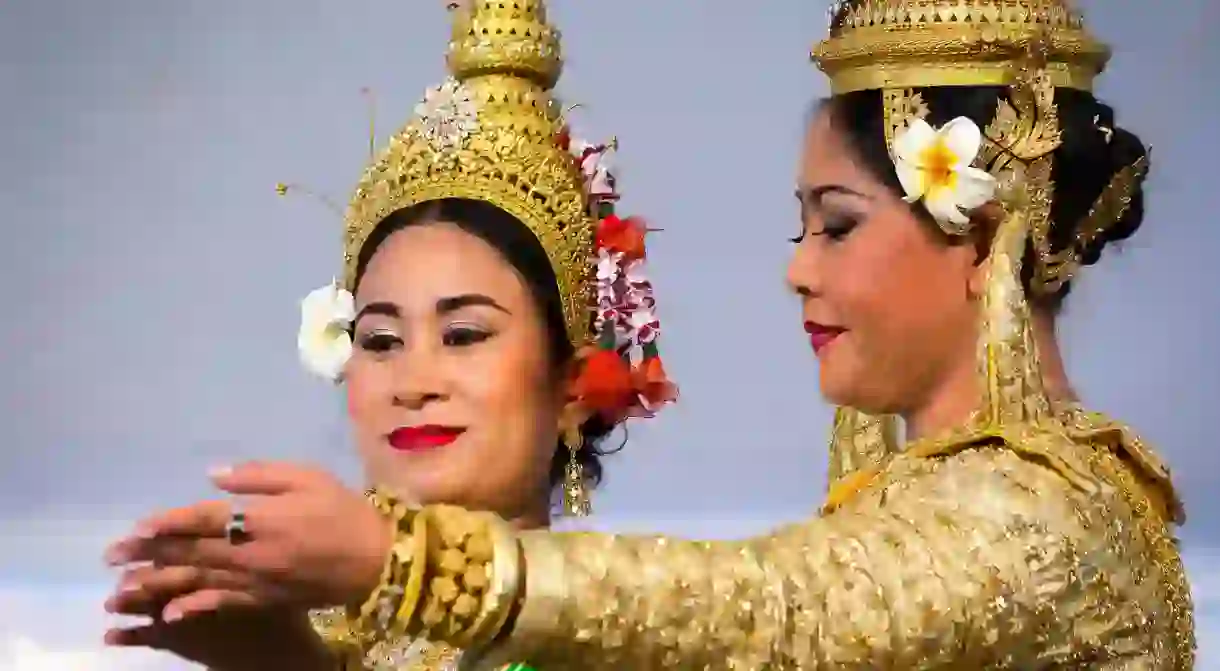The Best Festivals in Cambodia

The Cambodian calendar has many colourful festivals listed on it, and there’s always someone on hand happy to introduce the celebratory affairs to visitors. The majority of festivals are linked to the Buddhist calendar and see Cambodia’s cities and urban centres empty as locals return to their home provinces to reunite and celebrate with relatives. Here are some of the main festivals.
Khmer New Year
This event is one of the main celebrations in Cambodia and stretches across three days, usually starting on April 13th or 14th. Known in Khmer as Bon Chol Chhnam Thmei, it traditionally marks the end of harvest season, and with Cambodia being a predominantly agricultural country, this is a time when farmers will enjoy the fruits of their labour ahead of the monsoon season. Cambodians will head back home, usually for a week, to be with their families, so expect main centres, such as Phnom Penh and Siem Reap, to transform into ghost towns. However, the country’s villages spring to life with parties, visits to local pagodas and plenty of food. The majority of businesses will close, including many restaurants, and those that remain open will operate with a skeleton staff. If you’re in Cambodia during this time, know that hotels often hike up their prices, and be sure to book transport in advance.

Pchum Ben
After Khmer New Year, Pchum Ben is another hugely important holiday for Cambodians. The festival – spread across 15 days, with the final three given as public holidays – usually falls towards the end of September or beginning of October. Many people believe that during this time, the trapped spirits of dead ancestors stretching back seven generations return to earth. During this festival, Cambodians again return to their homeland to visit pagodas – seven are recommended – to pray, receive blessings and give offerings to monks, mainly in the form of food. The belief is that these offerings are passed onto their dead ancestors.
Bamboal Krobei
On the final day of Pchum Ben, a small village about 40 kilometres (24.8 miles) from Phnom Penh – Vihear Sour Cheung in Kandal province – is transformed into a hive of activity as people flock from the surrounding areas to watch buffalo and horse racing. Animals will be decorated with colour as people race them along a dirt track. People see this as a form of entertainment for the spirits that have come back to earth, with all contestants spending time in pagodas praying before the race starts at 6 am. It is followed by Cambodian wrestling.

Water Festival
This event is another famous three-day festival where, rather than becoming empty, the centres of Phnom Penh and Siem Reap fill up with hundreds of thousands of Cambodians from across the country wanting to watch the colourful boat races. Also called Bon Om Touk, the festival marks the end of the rainy season and the start of the Harvest moon, or full moon in the Buddhist month of Kadeuk (in November). The festival also marks the changing direction of the Tonle Sap River – the only waterway in the world that boasts this unique trait. Expect crowds, fireworks and other festivities. If you’re expecting the water fights that take over the streets during Thailand’s water festival, then forget it. Although, in villages, Cambodians often throw water and talc at one another.
Royal Ploughing Ceremony
Heralding the start of the rice-growing season, the Royal Ploughing Ceremony, called Preah Reach Pithi Chrot Preah Neangkol in Khmer, is a tradition used to forecast the forthcoming growing season and sow the seeds for successful crops ahead. The King usually leads the rituals and will traditionally till a plot of land with a plough pulled by oxen. After three rounds, the animals are allowed to fodder on a choice of rice, corn, sesame seeds, green beans, grass, water and wine. What they choose to eat will predict the outcome for the year ahead. Grains signal good yields for those crops. Wine suggests a slump in crime, water predicts flooding and eating the grass is seen as an upcoming spread of animal disease.














